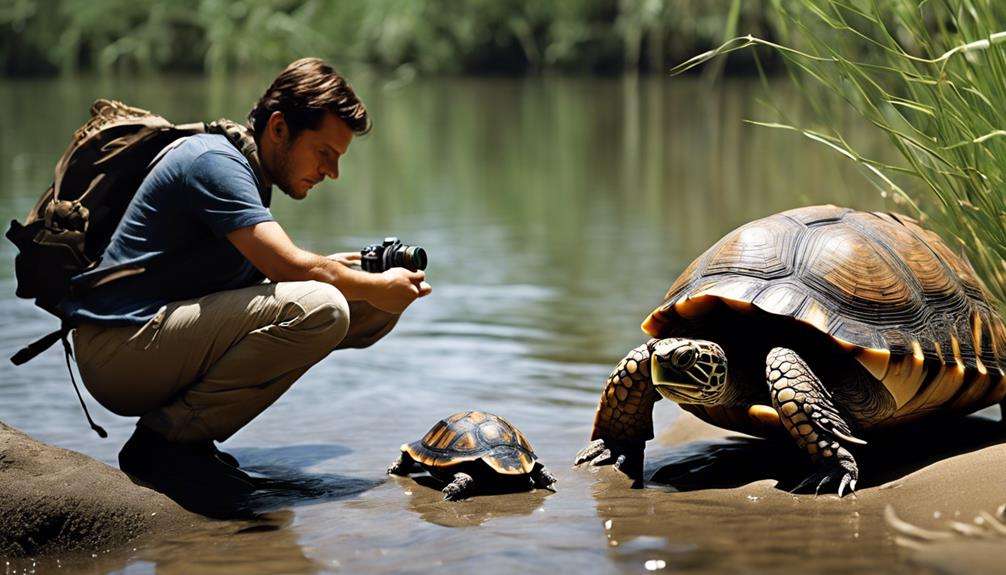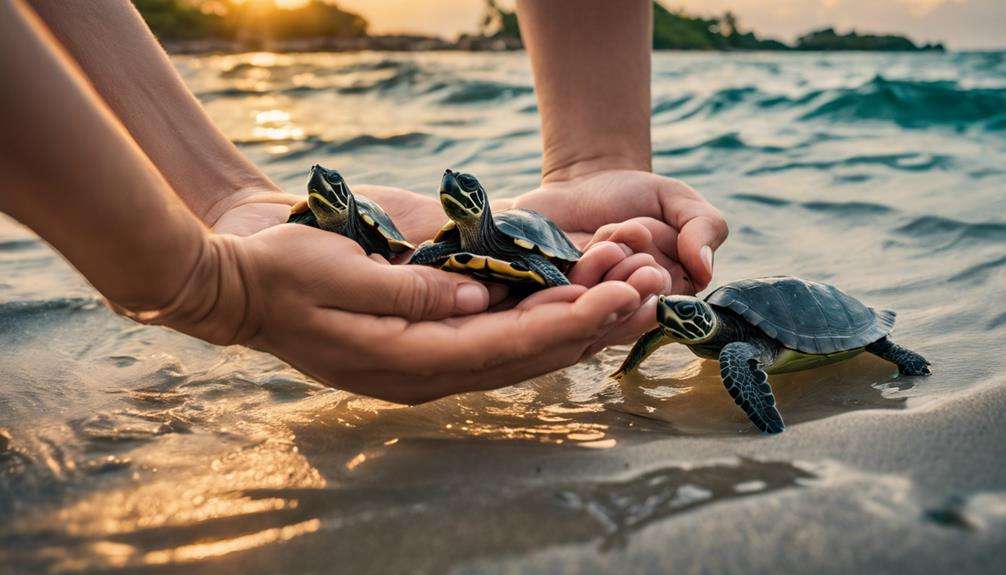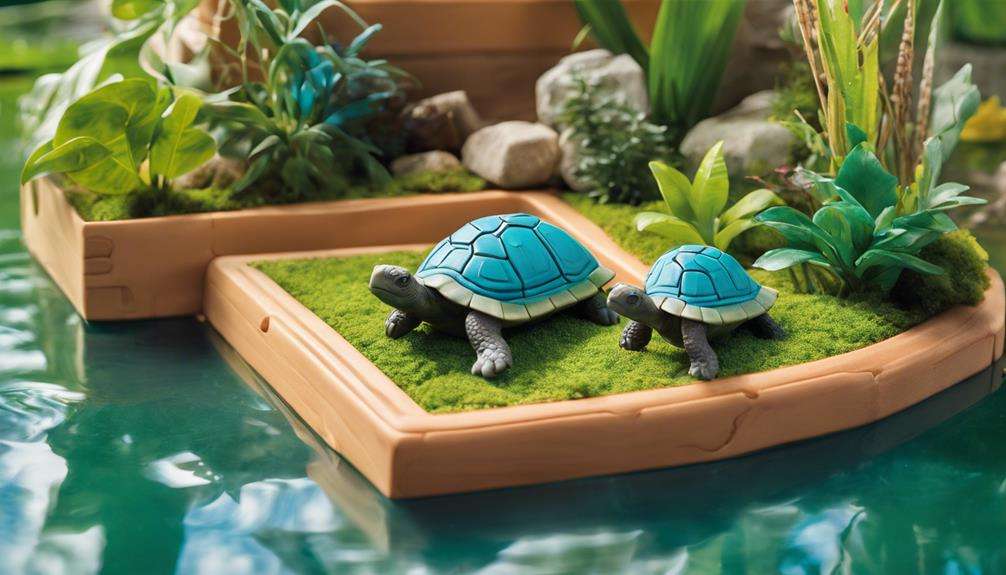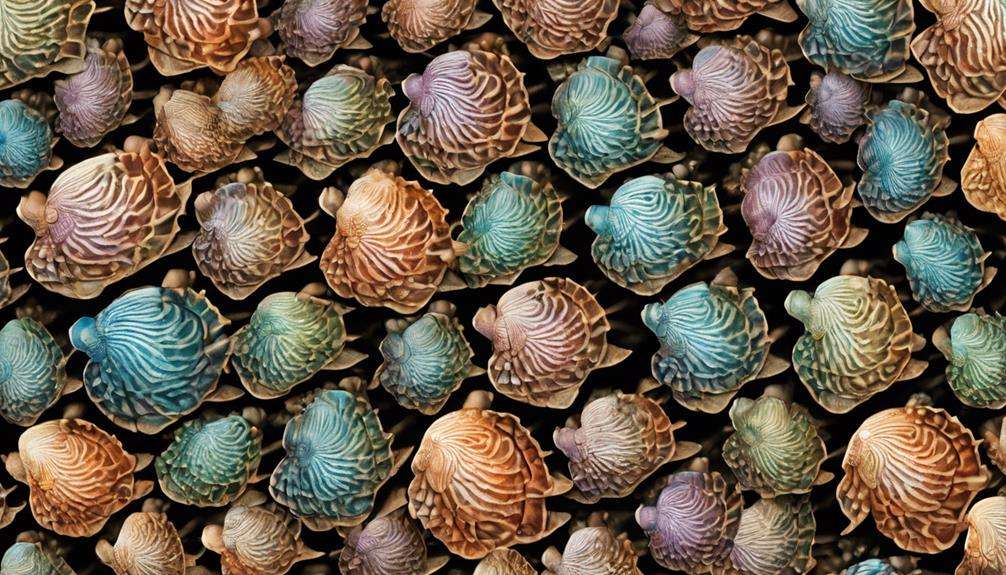When it comes to caring for uncommon turtle species, remember the saying, 'Different strokes for different folks.' Understanding the intricacies of specialized care for these unique creatures can be both rewarding and challenging.
With a focus on tailored nutrition, habitat adjustments, and proactive health monitoring, this guide opens doors to a world where every detail matters in ensuring the well-being of your uncommon turtle companions.
By delving into the specifics of their care requirements, you'll discover a whole new level of appreciation for these fascinating creatures.
Key Takeaways
- Research specialized habitat needs for uncommon turtle species.
- Provide varied, balanced diet tailored to each rare turtle's requirements.
- Regularly monitor health and seek vet care for unique health considerations.
- Customize interactions and enrichment activities for bonding and mental stimulation.
Unique Turtle Species Characteristics
Some uncommon turtle species exhibit unique characteristics that set them apart from more commonly known turtle species. The Mata Mata turtle, with its leaf-like appearance and large, flattened head, is a fascinating sight. This species is a master of camouflage in its natural habitat.
The African Sideneck turtle is easily recognizable due to its sideways neck, which it can retract under its shell for protection. This adaptation helps them avoid predators and stay safe.
Moving on to the Diamondback Terrapin, this brackish water turtle species is found in coastal regions of North America. Their ability to live in both freshwater and saltwater environments makes them quite versatile.
Softshell turtles, such as the Spiny Softshell, have a distinctive smooth, leathery shell instead of the typical hard shell found in other turtle species.
Setting Up Specialized Turtle Enclosures
Uncommon turtle species with unique characteristics necessitate specialized turtle enclosures tailored to their specific habitat requirements and behavioral needs. Research the habitat needs of your uncommon turtle species, including temperature, humidity, and lighting.
Provide an enclosure size that accommodates the adult size of your turtle, allowing ample space for movement. Customize the substrate to mimic its natural habitat, using sand, soil, or specific bedding materials. Incorporate climbing structures, hiding spots, and vegetation to cater to its behaviors and preferences.
Seek advice from experienced exotic pet owners, breeders, or herpetologists to create an enriching environment. By including specialized features in the enclosure, you can make sure your uncommon turtle species thrives in a setting that closely resembles its natural habitat.
Nutrition and Feeding Guidelines
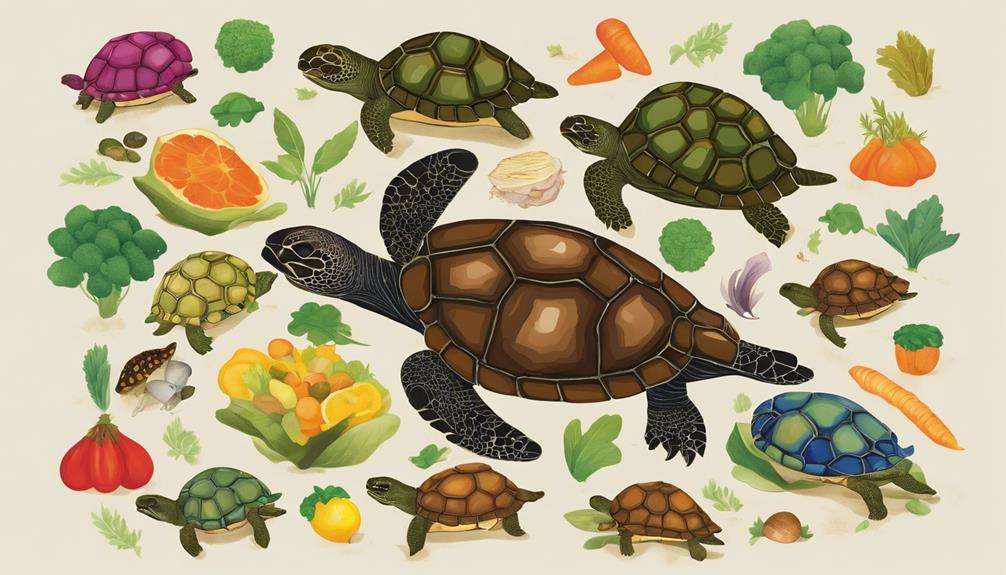
Researching the natural diet of your uncommon turtle species is critical to establish proper nutrition and feeding guidelines. Uncommon turtle species may have specific dietary needs based on their natural habitats and behaviors.
It's essential to offer a variety of foods such as insects, plants, fruits, and protein sources to meet your turtle's nutritional requirements. Consulting with a reptile veterinarian or specialist can help create a balanced diet plan tailored to your uncommon turtle species.
Monitoring your uncommon turtle's feeding habits is vital, and adjustments to the diet should be made as needed to guarantee top-notch health and well-being. By understanding the natural diet of your uncommon turtle species and providing appropriate nutrition, you can support their overall health and longevity.
Remember that a well-rounded and diverse diet is key to meeting the specific dietary needs of uncommon turtle species.
Health Considerations for Rare Turtles
Understanding the unique health considerations for rare turtle species is paramount to ensuring their well-being and longevity. Rare turtle species often have specific habitat requirements that must be met to maintain essential health. It's critical to consult with a reptile veterinarian experienced in caring for uncommon turtles to receive proper health guidance tailored to their specific needs.
Regular monitoring for any signs of illness or distress is crucial, as early detection can make a significant difference in their treatment outcomes. Researching and comprehending the rare turtle species' specific dietary needs and environmental conditions are essential for their overall health.
Implementing preventive health measures, including providing a suitable diet, maintaining their specific habitat, and scheduling regular check-ups with a veterinarian, are key to ensuring the well-being of rare turtles. By taking proactive steps to address their health requirements, you can contribute to the longevity and quality of life of these unique and precious creatures.
Interacting and Bonding With Uncommon Turtles

To establish a strong bond with your rare turtle, spend time observing its behavior and preferences. Understanding your uncommon turtle's behavior will help you tailor your interactions to suit its needs.
Offering treats like mealworms or fruits can create a positive association with your presence. Enrichment activities, such as hiding treats or introducing new items in the habitat, can stimulate your turtle mentally and keep it engaged.
When handling your uncommon turtle, remember to be gentle and careful to build trust and reduce stress. Consistency is key in developing a bond, so create an interaction routine that aligns with your turtle's preferences. By maintaining a regular schedule, you provide your turtle with a sense of security.
Through observation and catering to its preferences, you can foster a deep connection with your uncommon turtle, promoting its well-being and enhancing your bond.
Frequently Asked Questions
How Do You Take Care of a Pet Turtle for Beginners?
To care for a pet turtle as a beginner, guarantee proper turtle diet, habitat setup, gentle handling, health monitoring, enrichment activities, water quality, temperature regulation, UVB lighting, humidity levels, and understanding nesting behavior. Consistency is key in turtle care.
How Do You Take Care of a Found Turtle?
Wondering how to care for a found turtle? Identify its species, provide proper heating and lighting in a temporary habitat, offer a varied diet, limit handling to reduce stress, seek guidance from professionals, and maintain water quality.
What Is the Easiest Pet to Take Care of Turtles?
Taking care of pet turtles is rewarding. Start with a balanced turtle diet consisting of animal protein and plant matter. Guarantee a suitable habitat setup with UV lighting, proper water quality, and temperature regulation. Regular health care, handling, and enrichment activities are essential.
What Do You Need to Know About Owning a Turtle?
To own a turtle, understand their diet, tank setup, water quality, handling, health concerns, temperature, enrichment, social needs, shedding, and vet visits. Carefully consider these aspects for the well-being of your shelled companion.
Conclusion
Congratulations on completing the guide to caring for uncommon turtle species. Remember, like a delicate ecosystem, each species requires unique care to thrive.
By following these guidelines, you're safeguarding the well-being of these rare creatures and nurturing a bond that will withstand the test of time, like the sturdy shell of a turtle.
Your dedication to responsible ownership guarantees a harmonious relationship with your uncommon turtle companion. Keep up the excellent work!


